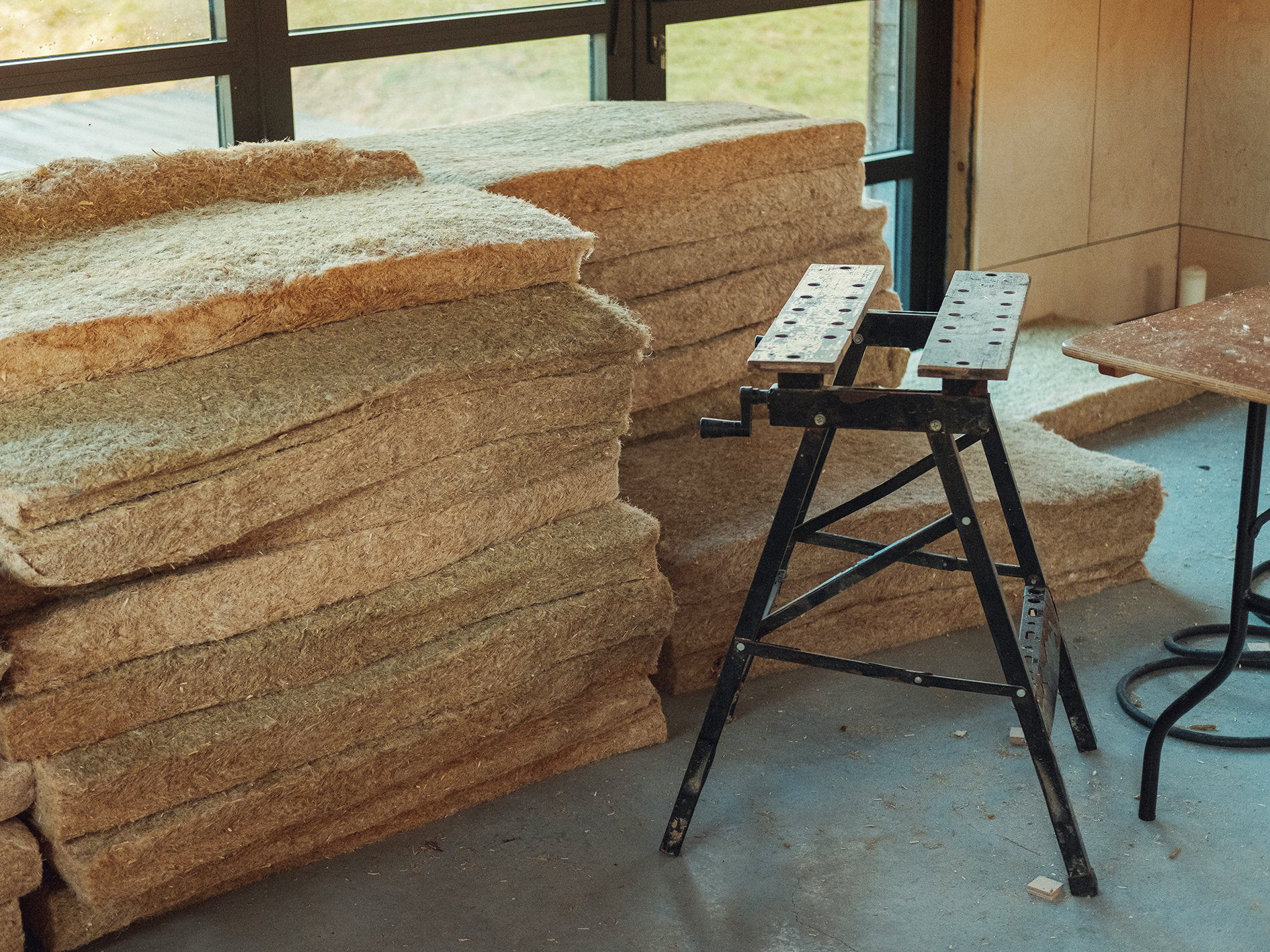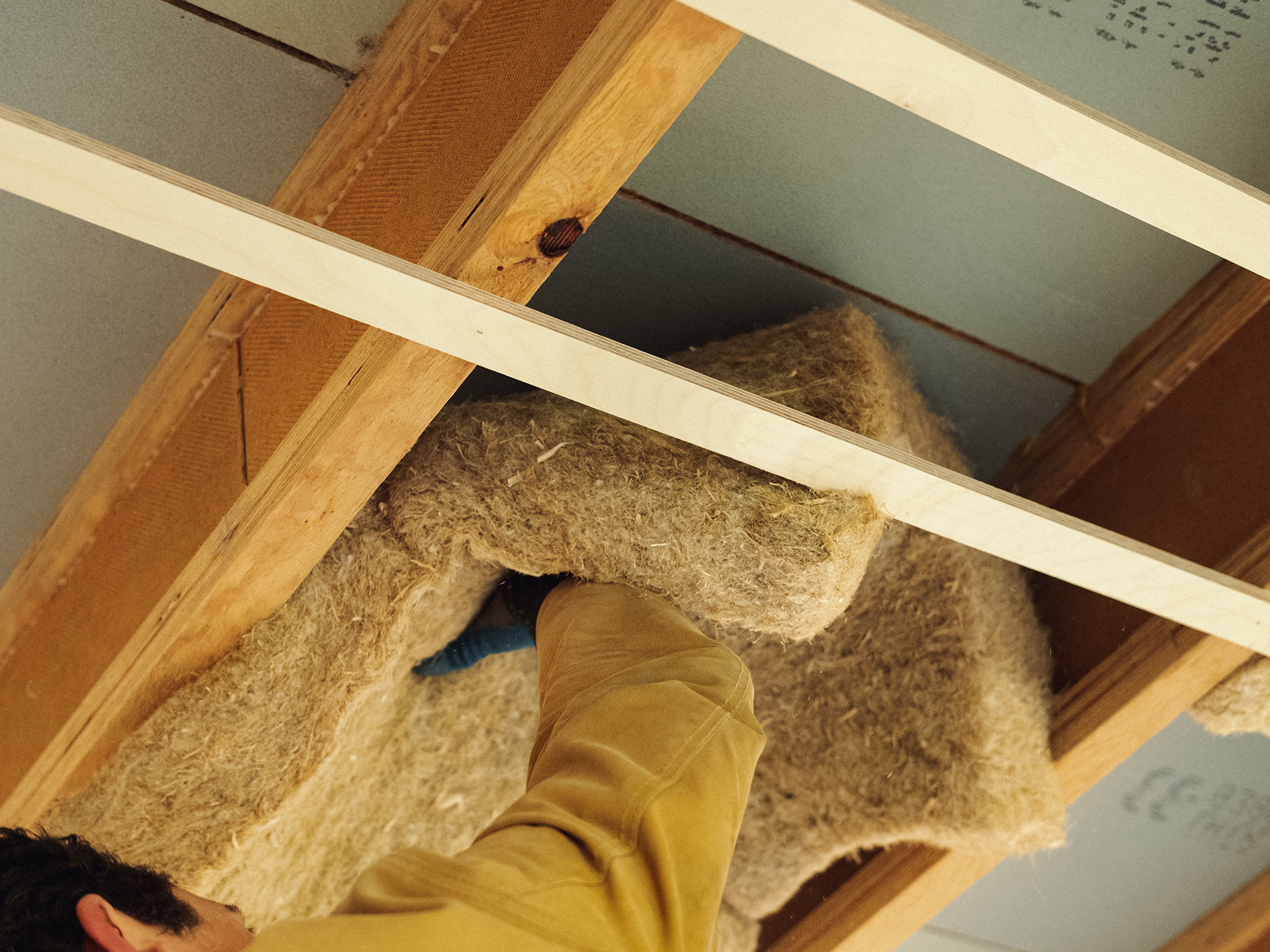Eco-friendly hemp insulation
What are the pros and cons of this green building material?
Hemp is one answer to the building industry’s quest for sustainable materials – but there are legal barriers to growing the plant in the UK. Here’s what you need to know about the ecofriendly insulation that has caught the imagination of green builders.
 Bio Flex insulation. Image supplied by Hemspan.
Bio Flex insulation. Image supplied by Hemspan.
What is hemp insulation made of?
As the name suggests, hemp is made from the hemp plant. In particular, the insulation material is made from the inner part of the stalk, known as the shiv. The crop is often grown for the intention of harvesting the seeds for their oil, which is used for a range of products from skincare to salad dressing. The stalks can then be considered a waste product which is pulverised to provide the fibre for insulation which is bound together with polyester fibres.
Hemp insulation is a composite material but one that is very eco-friendly containing as much as 92% hemp and 5% polyester fibres. It is then treated with non-toxic agents to prevent insect and mould attack and to boost fire resistance.
History of hemp
Despite the current legal restrictions, hemp has a long history of cultivation in the UK. It was produced for centuries to make rope, clothing, animal feed, textiles, ships’ sails and rigging. Up until the early 20th century it was a commonplace crop. The hemp plant is hardy, does not require much water and can grow in almost any soil. But the association with narcotics led to its cultivation being outlawed in the western world. The UK government made it illegal to grow hemp along with marijuana in 1928.
Why is hemp associated with cannabis?
Legally, hemp is defined as a cannabis plant but with very low, if any, levels of tetrahydrocannabinol (THC), the main psychoactive ingredient in the drug. This means it’s impossible to get high on hemp despite being dubbed “marijuana’s cousin.” Possibly paranoia, possibly true, but there’s a theory that billionaires with interests in plastics and paper pulp successfully lobbied to have hemp production suppressed. A war on drugs, according to this theory, was stirred up to deepen the society’s dependency on petrochemicals. Whether that is true or not, hemp was stigmatised and its production curtailed.
What does the law say on hemp?
As hemp belongs to the cannabis genus of plants it’s still classed as a controlled substance in the UK. This means it’s illegal to grow hemp without a licence from the Home Office. As a result, there is very limited cultivation of the crop. What’s more farmers can only harvest the seeds and stalks of the plant while the flowers and leaves must be destroyed on site.
In the USA and many European countries, cultivation of the industrial, non-psychoactive strain of the hemp plant has recently been legalised. Pressure is growing for the UK government to follow suit.
Why is there a buzz around hemp now?
The legalisation of the cultivation of hemp by a world superpower combined with the quest for more eco-friendly building materials has led to hemp being used in construction. Hemp has been mixed with lime to make hempcrete for use as building blocks or as a pourable material for floors.
Additionally, hemp insulation is becoming better known. It is viewed as a greener alternative to fibreglass and foam – one that has less impact on the environment during manufacturing. Hemp insulation has been produced in North America since about 2018, so it’s relatively new. In the UK, it’s available from specialist manufacturers, including Hemspan, Thermafleece and IndiNatures. Bio Flex insulation. Image supplied by Hemspan.
Bio Flex insulation. Image supplied by Hemspan.
Pros of hemp insulation:
- Curb emissions: The hemp plant is believed to be twice as effective as trees at absorbing and locking up carbon. It sequesters two tonnes of CO2 for every tonne of fibre produced. A Scottish government backed study has found that that the environmental benefits of industrial hemp production could be “enormous” if the legislative barriers to growing the plant in the UK were removed. Yet hemp is hardly mentioned in the debate on curbing climate change.
- Sustainability: Hemp has another advantage is that it grows very quickly, up to 4 metres in 100 days and requires little or no pesticides as it is naturally resistant to pests and insects. Nor is weedkiller required as it naturally shades out weeds. Hemp has long tap roots that tend to break up the soil, improving soil quality and it releases few toxins into the wider eco-system. As a natural, renewable, sustainable resource, hemp is an attractive option for environmentally conscious homeowners.
- Energy efficiency: Ultimately, the most important attribute of any insulation material is to keep a building warm in winter, and cool in summer. Hemp has high thermal mass and low conductivity, so provides excellent insulation against heat and cold. Hemp’s density means it is also a good sound insulator. As a natural material, hemp only needs 10% of the energy required for the manufacture of rigid foam insulation. It has very low embodied energy.
- Breathability: Hemp insulation allows building to “breathe” by absorbing moisture from the air and then releasing it again. Hemp is hygroscopic, which means it absorbs condensation to help control a home’s humidity. And at the end of its life, it is compostable.
- Non-toxic and allergen free: Hemp insulation is a natural and non-toxic material, making it a safe choice for those concerned about indoor air quality. Unlike some synthetic insulation materials, hemp doesn’t release harmful chemicals or allergens into the air, contributing to a healthier home. Nor does it irritate skin or lungs. This makes it much more pleasant to install than fibreglass batts or loose-fill cellulose, for example.
- Versatility of applications: Hemp insulation usually comes in long batts which will stay firm when stood up between wall studs. Because it doesn’t shrink or slump it won’t need topping up and will last the lifetime of the building. By contrast rolled fibreglass, sheep’s wool and even blow-in insulation will tend to slump and compress over the years. Hemp insulation can be used in all applications except on concrete floors. It can be cut to size with scissors or a knife; no special training or equipment is needed. On the downside, it doesn’t naturally fold around pipes and will need to be cut to size.
Cons of hemp insulation
- Initial cost: The main disadvantage is the cost. Compared to mainstream insulation materials like fibreglass or mineral wool, hemp insulation (like most natural insulations materials) is not cheap.
- Thickness: While it is at least a good insulator as other natural materials like sheep’s wool, it is not as good as spray foam which creates the tightest seal of any insulation when properly installed or PIR (polyisocyanurate) boards. PIR has such a high thermal performance it only requires half the thickness of hemp insulation or mineral wool.
- Limited awareness: Hemp insulation is still relatively new in the construction industry and as a result it may not be as readily available as some other more mainstream materials. Additionally, some builders may be unfamiliar with it, leading to a lack of awareness of its benefits.
- Moisture sensitivity: Excessive moisture can affect the performance of hemp insulation. Hemp insulation is not suitable for damp cellars or wet climates, for example.
It’s hard to argue with hemp insulation’s eco-credentials. Its sustainability, thermal performance, breathability and non-toxic properties make it a frontrunner in the quest for greener insulation materials. It’s a great product and good to work with but is it worth the extra cost? The answer possibly depends on how much value you put on living in a healthier, more sustainable home and doing your bit to save the planet.
